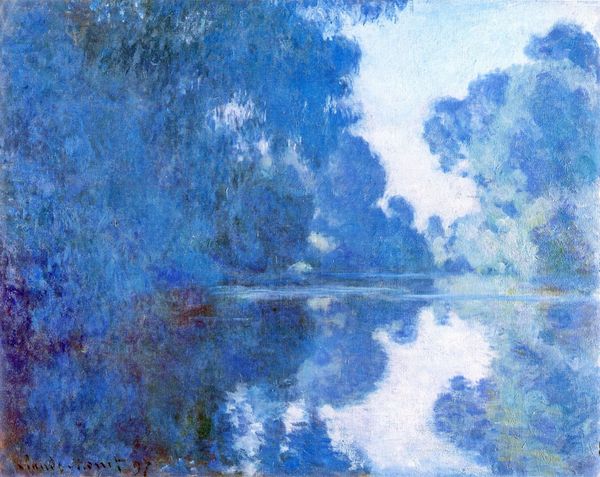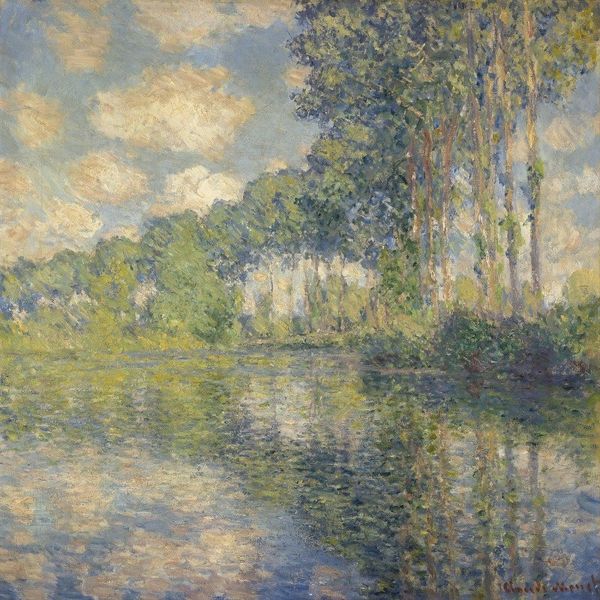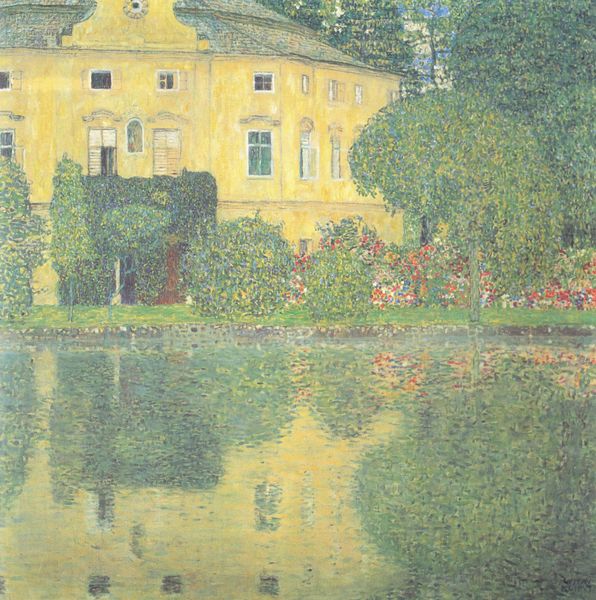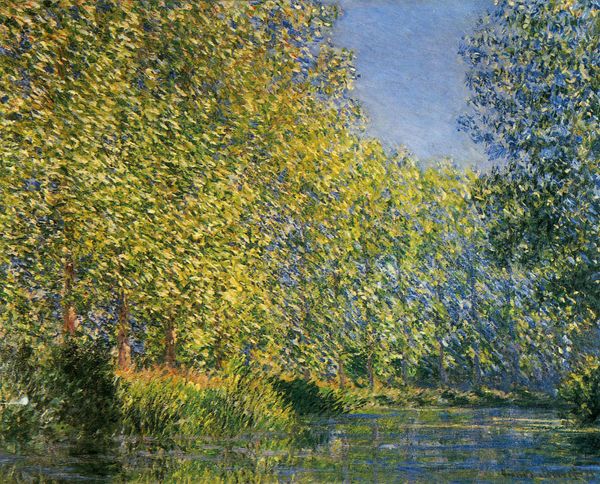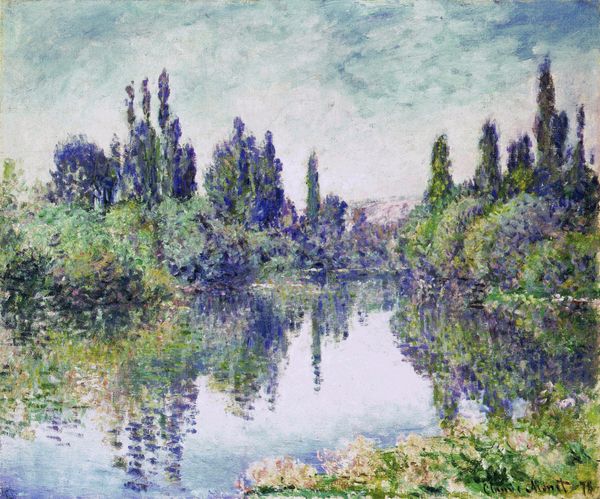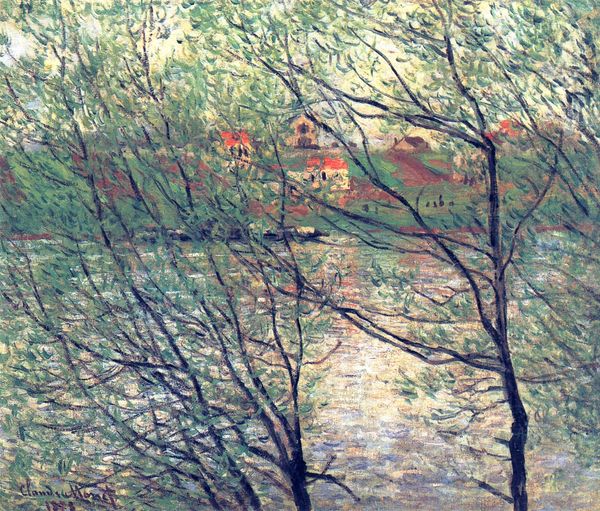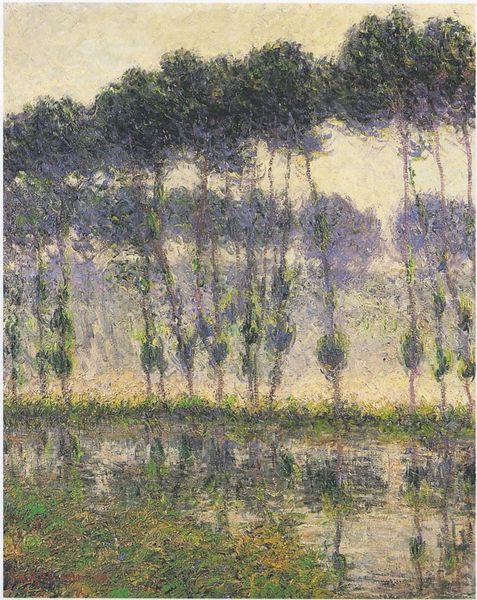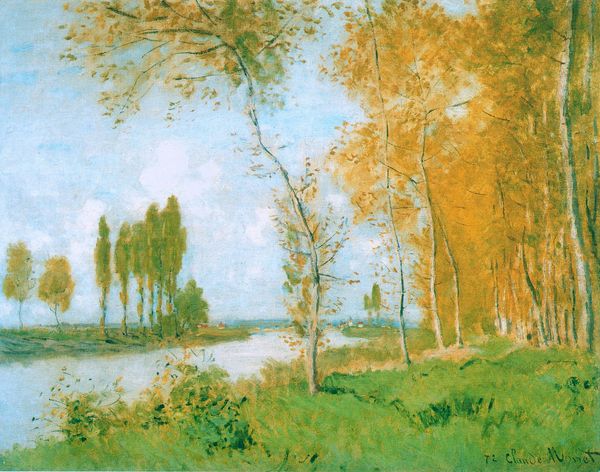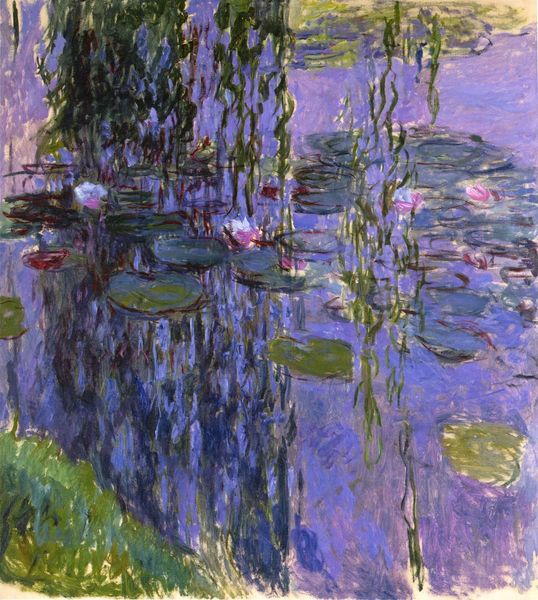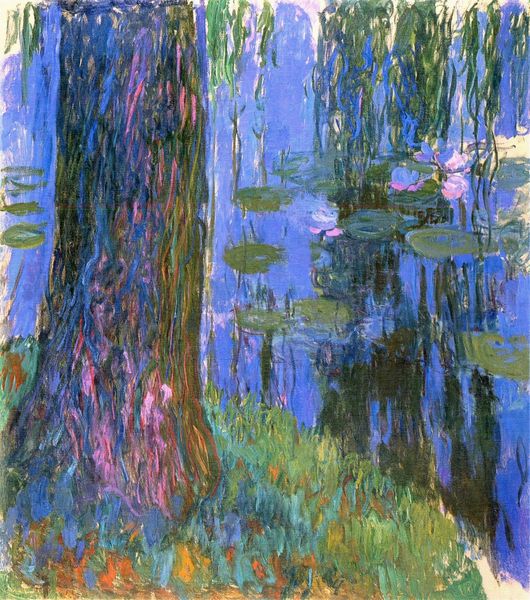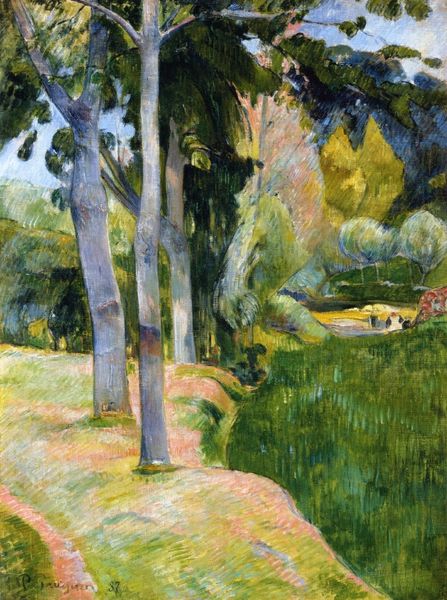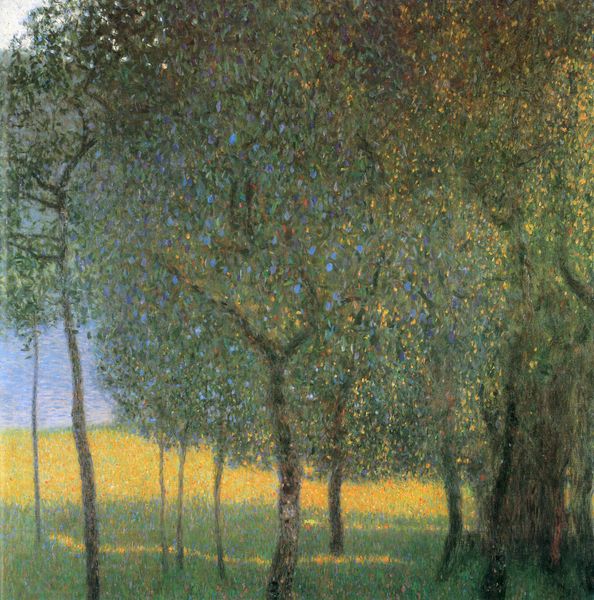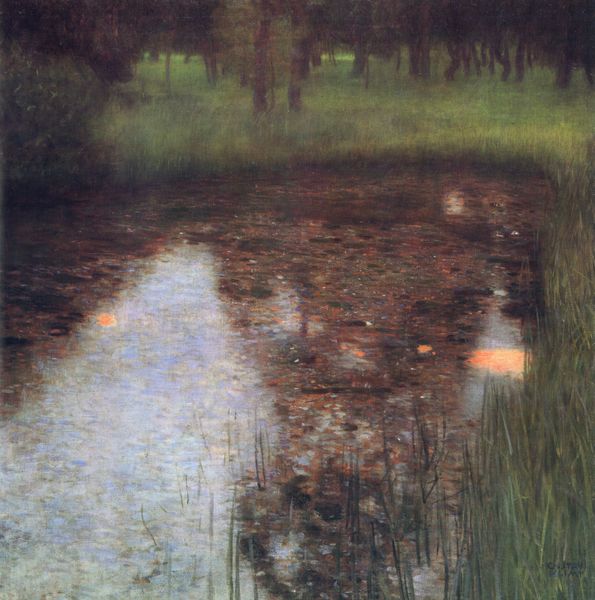
Copyright: Public domain
Editor: This is Gustav Klimt’s "Park of Schönbrunn," painted in 1916. It looks like a tapestry of green hues, created with oil and tempera, with just a hint of figures along the path. I find the flatness quite striking; it's like a shimmering, decorative surface. What do you make of it? Curator: Well, let's consider Klimt’s choice of tempera alongside oil. This wasn't just about aesthetic preference, but the physical properties of the materials themselves. Tempera offers a matte finish, quite different from the sheen of oil. And how does that impact our understanding of landscape as commodity? These carefully manicured parks, especially Schönbrunn, reflect imperial power, sustained through intensive labour. Editor: So you’re saying that Klimt's technique highlights the manufactured aspect of this ‘natural’ space? The repetitive, almost obsessive brushstrokes feel very deliberate. Curator: Exactly. The dense application of paint, almost blurring the distinction between water and foliage, draws our attention to the act of painting itself. It's less about depicting the park accurately and more about showcasing the artistic labor transforming the landscape. Editor: That makes me think about the social context too. This was painted during World War I. Was Klimt responding to the devastation of war by turning to an almost idealized vision of the natural world? Curator: It’s plausible, and considering material shortages due to wartime demands, even Klimt would have had limited access to specific pigments. The prevalence of greens may have been as much a matter of access as artistic choice. So, how does this influence your impression of the painting now? Editor: It makes me see it as less purely decorative and more like a complex meditation on material constraints and societal forces that shape both art and the world around us. It's a landscape reborn, shaped by material choices and labour. Curator: Precisely! Considering those material realities and labor makes visible how our world gets built. It reveals an additional depth to what might first appear a simple scene.
Comments
No comments
Be the first to comment and join the conversation on the ultimate creative platform.
